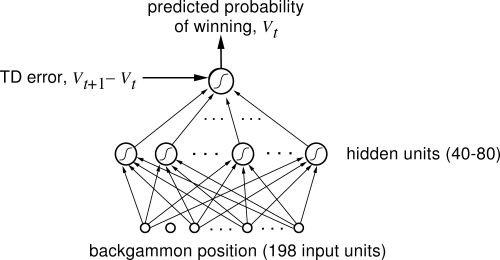This is the implementation of the original TD Gammon algorithm by Gerald Tesauro at IBM's Thomas J. Watson Research Center. The Agent uses Self-Play Reinforcement learning, and a non linear function approximater I.e. a Neural Network. I have trained the program over 30,000 games and used a single hidden layer and 80 units. The original program used 2-ply search to select it's moves but since the program is currently only capable of running on a CPU performing a search with depth greater than 1 is far too expensive as it takes a long time to select a movie (even with alpha-beta pruning).
Project is created with:
- Python 3
- Pytorch
- Numpy
Files Required to train agent:
- env.py
- Agent.py
- model.py
Files to test agent:
- test_agent.py
- test.py
- Play.py (Used to play against human)
Weights to load in neural network:
- model.pth (trained over 30,000 games of self-play)
- model_weak.pth (trained over 3000 games of self-play)
Download by cloning this repository and store all the files in the same folder and run the following commands:
Start the training (Enter number of iterations i.e. games of self-play RL) $ python model.py
To check if agent is learning, run this command which pits the agent against a player who always selects the first action amongst all the possible actions.
$ python test.py
To play against a slightly better agent let it play against a better agent trained with around 3000 games.
$ python test_agent.py
- Note - To run smoothly move all the files into a single folders i.e. remove the Train, Test, Play.
- In Play.py the program outputs a graph which predicts the win rate at that ply.
- Current interface in Play.py
- Implement a GUI, currently its just a linear representation of the board with numbers between 0-27
- Enable GPU support as currently training takes a long time.
- Tesauro, Gerald (March 1995). "Temporal Difference Learning and TD-Gammon". Communications of the ACM. 38 (3). doi:10.1145/203330.203343. Retrieved Nov 1, 2013.
- https://deepmind.com/learning-resources/-introduction-reinforcement-learning-david-silver


